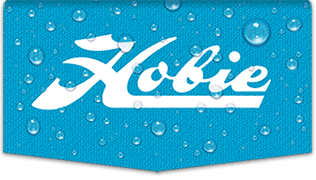|
I finally got your pics up.
Yes this is classic metal fatigue, probably caused by applying too much force to the pedals. Some of the fixes I described above can help strngthen existing pedals. I suspect some of the real hardcore racer guys (and gals), take it on themselves to make up stronger pedal arms, think about it, the part itself is extremely simple 3/4" square stock with a few holes machined in, you can likely take them to a local machine shop and have stronger pedals made from either a better grade of alum (360 T6 or any of the stronger aircraft grades), or stainless. Either solid or tubing (I would go solid).
This is not a common problem, and most who have broken several pedal arms, and are known to really push their drives do something themselves to strengthen the drives for extra heavy duty use, not really Hobies problem.
I for example somehow took a liking to the flow 90 (eclipse) fins and have those installed on my mirage drive, knowing full well that if I over power the pedals on my old 2012 mirage drives (that have been upgraded to glide tech), the pedals will eventually give out. It doesn't end with the pedal cranks, as soon as you strengthen the pedal cranks, the next thing in line to go is the drive cables. Yes you can make stronger cables, but then the problem moves on down to the sprockets, and the fin shafts. And of course all the bearings and shafts need to be replaced more often.
I suspect the real hard core guys replace a lot of those components often, (salt water intrusion into the cables shortens their lifespan quite a bit, if you can keep salt water from entering the cables they will last a little longer, when I put new cable in I typically soak each end with clear coat before installing, then I put a coating of grease on each cable end to prevent water intrusion into the cable, that I re-apply often. Yes I have to replace my cables every year or so, ( what I call consumable items, along with the fins).
One thing I do that I think helps is when I'm really pushing my drives hard (probably too hard), I point my toes inward so the force is against the upright shaft itself, this lessens the twisting force on the top of the pedal.
I know for a fact especially with my flow 90 fins, if I push too hard or my feet are too far out on the pedals, they will just snap, so I conciously know not to do that because I know it will end my day and cost me a lot of money to repair, (all the mirage parts are very expensive).
Running mirage drives is every much training your leg muscles and reaction time as anything else. For example I hit the bottom with my mirage fins all the time, yet have never ruined a fin or shaft, because my muscles are trained to stop and reverse rather than just trying to peddle on thru (100% damage every time and gets really costly to me). Actually that's always the first thing I go over with anyone new to mirage drives, before we ever leave shore.
I have certain relatives from up north (not mentioning any names (lol)), that have wrecked my mirage drives, because they ignored my instructions, ( it's not their stuff, so they can care less), that's likely why you see very few places renting out mirage kayaks I suspect.
This reminds me of the patient who goes to the doc and says when I do this it hurts, the doctors answer is always 'don't do that then'.
In my case I have had many mirage kayaks over the last ten yrs or so and have peddled many thousands of miles, this was my main exercise program for a long time and I peddled an average 10-15 miles weekly all year round (lol because I can do that in swfl and the keys). I learned the hard way, (financially) if you push the drives too hard, or you don't take care of the drives with regular maint, they will cost you a very big bag on money. I have never broken a pedal crank arm, if I ever do I will do the fixes described above on the next set, or make new pedals arms myself.
Just tryin to help here
FE
|





